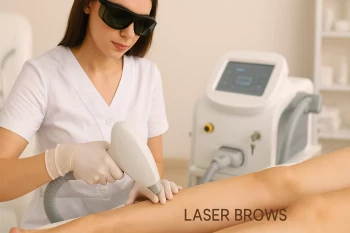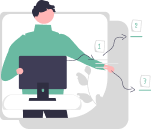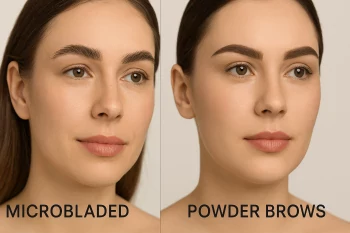So you've decided to take the plunge into laser hair removal—congratulations on choosing a treatment that could potentially free you from the endless cycle of shaving, waxing, and plucking! Whether you're targeting facial hair, underarms, legs, bikini area, or another region, your first laser hair removal session can feel like stepping into the unknown. This comprehensive guide will walk you through exactly what to expect before, during, and after your treatment, helping you feel prepared and confident as you begin your hair-free journey.
Before Your Appointment: Preparation Is Key
Proper preparation can significantly impact the effectiveness and comfort of your laser hair removal session. Here's what you need to know and do before your appointment:
Consultation and Patch Test
Most reputable clinics will require an initial consultation before your first full treatment. During this appointment:
- Your medical history will be reviewed to ensure you're a suitable candidate
- The technician will assess your skin tone and hair color to determine the optimal laser settings
- A patch test may be performed on a small area to check how your skin reacts to the laser
- You'll discuss your goals, expectations, and any concerns you might have
Dr. Sarah Chen, a board-certified dermatologist specializing in laser treatments, explains: "The consultation is a crucial step that allows us to customize the treatment to your specific needs and ensure safety. The patch test helps us determine the most effective and comfortable settings for your unique skin and hair combination."
Pre-Treatment Instructions
In the weeks leading up to your appointment, you'll likely be asked to follow these guidelines:
- Avoid sun exposure for at least 2-4 weeks before treatment (including tanning beds and self-tanners)
- Stop plucking, waxing, or using depilatory creams for 4-6 weeks before treatment (these methods remove the hair follicle that the laser targets)
- Shave the treatment area 12-24 hours before your appointment (this allows the laser to target the follicle while minimizing surface skin damage)
- Avoid blood-thinning medications like aspirin and ibuprofen for a few days before treatment (with your doctor's approval)
- Skip skincare products containing retinoids, glycolic acid, or other potentially irritating ingredients in the treated area for 3-5 days before your session
"Following pre-treatment instructions significantly reduces the risk of side effects and optimizes results," notes Lisa Rodriguez, a certified laser technician with over 10 years of experience. "I've seen dramatic differences in outcomes between clients who carefully followed preparation guidelines and those who didn't."
The Day of Your Appointment
On the day of your first session, consider these practical tips:
- Wear loose, comfortable clothing that easily exposes the treatment area
- Remove all makeup, lotions, and deodorant from the treatment area
- Take an over-the-counter pain reliever about 30-45 minutes before your appointment if approved by your provider
- Arrive with clean skin in the treatment area
- Plan for about 60-90 minutes for your first appointment (subsequent sessions are often shorter)
During Your Session: The Treatment Experience
Knowing what happens during the actual procedure can help ease any anxiety you might feel. Here's a step-by-step breakdown of a typical first laser hair removal session:
1. Preparing the Treatment Area
When you arrive for your appointment:
- You'll be taken to a private treatment room
- The technician will clean the treatment area
- You may change into a gown or other appropriate garments depending on the area being treated
- Photos might be taken for before-and-after comparison (with your consent)
- Your eyes will be protected with special goggles or shields
2. The Laser Application Process
The actual laser treatment follows these general steps:
- A cooling gel may be applied to the skin to protect the surface and enhance comfort
- The technician will adjust the laser settings based on your skin tone, hair color, and thickness
- A handheld device will be pressed against your skin, which delivers the laser pulses
- As the technician moves the device across the treatment area, you'll feel a series of quick zaps
- For smaller areas like the upper lip, treatment might take just 5 minutes
- Larger areas like full legs might take 30-60 minutes
- The technician will check in regularly about your comfort level
3. The Sensation: What Does It Feel Like?
One of the most common questions is about pain levels. Here's what you can realistically expect:
- Most people describe the sensation as a rubber band snapping against the skin
- Some areas are more sensitive than others (face and bikini line tend to be more uncomfortable than legs)
- Each pulse is very brief, lasting only a fraction of a second
- Modern lasers often include cooling features to minimize discomfort
- Pain tolerance varies significantly between individuals
James Wilson, who recently completed a full course of laser treatments for his back, describes his experience: "I was nervous about the pain, but it wasn't nearly as bad as I expected. The first session was the most uncomfortable—quick zaps that stung for a second, then faded quickly. It became easier with each session as the hair thinned out."
4. Technology Variations
Different clinics use different laser technologies, which can affect your experience:
- Alexandrite lasers: Fast and effective for light to olive skin tones
- Nd:YAG lasers: Better suited for darker skin tones
- Diode lasers: Effective for a wide range of skin types
- IPL (Intense Pulsed Light): Technically not a laser but uses similar principles; generally less powerful
- Cooling systems: Many modern devices incorporate cooling technology to reduce discomfort
Dr. Michael Patel, cosmetic dermatologist, advises: "Ask your provider about their technology and why it's appropriate for your skin type. The right laser for your specific combination of skin tone and hair color makes a tremendous difference in both results and comfort."
After Your Session: Post-Treatment Care and Expectations
What happens after your first session is just as important as the treatment itself:
Immediate Aftermath
Right after your treatment, you can expect:
- Redness and swelling similar to a mild sunburn that typically subsides within a few hours
- Heat sensation in the treated area that gradually diminishes
- Small bumps around hair follicles that usually resolve within 24 hours
- Application of soothing gel or cream by your technician before you leave
Post-Treatment Care Instructions
Your provider will give you specific aftercare instructions, which typically include:
- Avoid sun exposure on the treated area for at least 1-2 weeks
- Apply broad-spectrum SPF 30+ whenever the treated area will be exposed to sunlight
- Skip hot showers, saunas, and strenuous exercise for 24-48 hours
- Don't exfoliate or use harsh skincare products on the treated area for several days
- Apply cool compresses if you experience discomfort
- Moisturize regularly with gentle, fragrance-free products
- Avoid picking at any scabs or crusting that might develop
Emma Richards, an esthetician specializing in laser treatments, emphasizes: "The aftercare is critical to preventing complications and ensuring optimal results. Treating your skin gently after laser and protecting it from the sun can make a significant difference in your outcome."
What to Watch For: Normal vs. Concerning Reactions
It's important to distinguish between normal post-treatment reactions and those that might require medical attention:
Normal reactions include:
- Redness lasting 24-48 hours
- Mild swelling for 1-2 days
- Sensation similar to a sunburn
- Small bumps around hair follicles
- Shedding of treated hairs over the next 1-3 weeks
Contact your provider if you experience:
- Severe or increasing pain
- Blistering or crusting that worsens
- Signs of infection (increasing redness, warmth, pus)
- Burns, scabs, or skin color changes that persist
- Prolonged swelling beyond 2-3 days
The Results Timeline: Managing Expectations
One of the most important aspects of laser hair removal is understanding the timeline for results:
After Your First Session
Many first-timers are surprised to find that they don't see immediate hair loss after their session. Here's the typical progression:
- Immediately after: The treated hair is still visible
- 7-14 days later: Treated hairs begin to shed gradually (this is not regrowth but the hair working its way out of the follicle)
- 2-3 weeks after: You'll notice patches where hair has fallen out
- 4 weeks after: New growth begins from hair follicles that were in their dormant phase during treatment
"The shedding process is sometimes misunderstood," explains Thomas Zhang, laser specialist. "Clients expect the hair to disappear instantly, but it takes time for the body to push out the treated hairs. What looks like continued growth in the first week is actually the treated hair being expelled."
The Full Treatment Course
A full laser hair removal treatment plan typically consists of:
- 6-8 sessions for most body areas
- 8-12 sessions for facial areas, especially for women with hormonal influences
- Sessions spaced 4-6 weeks apart for body areas
- Sessions spaced 4 weeks apart for facial areas
"Laser hair removal targets hairs in the active growth phase, which is why multiple sessions are necessary," says Dr. Alisha Patel, dermatologist. "Each session gradually reduces the total number of viable follicles until you achieve your desired level of hair reduction."
Common Questions First-Timers Ask
Will one session make a noticeable difference?
Most people see some reduction after the first session, but it's typically modest—around 10-20% reduction in hair density. The most dramatic results usually become apparent after 3-4 sessions.
How much does it hurt, really?
Pain perception varies widely. On a scale of 1-10, most clients rate the discomfort between 2-6, with certain areas like the upper lip and bikini line being on the higher end of that scale.
Can I shave between sessions?
Yes! In fact, shaving is the only recommended hair removal method between laser sessions. Avoid waxing, plucking, or depilatory creams as these remove the follicle that needs to be present for the laser to work.
Will the hair grow back thicker?
No, this is a common misconception. When hair does regrow after laser treatment, it's typically finer and lighter than before—the opposite of growing back thicker.
Is it really permanent?
Laser hair removal is best described as "permanent hair reduction" rather than "permanent hair removal." Most people experience 70-90% reduction after a full course of treatments. Maintenance sessions (once or twice a year) may be needed to manage the small percentage of hair that eventually returns.
What areas cannot be treated?
Most body areas can be treated except for:
- Inside the nose or ears
- Around the eyes
- Tattoo-covered areas
- Areas with active skin infections or open wounds
Can I get treated while pregnant?
Most providers avoid treating pregnant women, not because laser is known to be harmful during pregnancy, but because there aren't enough studies to confirm its safety. It's typically recommended to wait until after pregnancy and breastfeeding.
Cost Considerations for Your Treatment Plan
Understanding the financial investment helps you plan for your complete hair removal journey:
Average Costs by Treatment Area
Prices vary significantly based on location, provider expertise, and the technology used:
- Small areas (upper lip, chin, underarms): $100-$300 per session
- Medium areas (bikini line, full face, lower legs): $200-$500 per session
- Large areas (full legs, back, chest): $300-$800 per session
Value Packages and Financing
Many clinics offer cost-saving options:
- Package deals for purchasing multiple sessions upfront (often 20-40% savings)
- Membership programs with discounted rates
- Combination area discounts when treating multiple regions
- Financing options with monthly payment plans
- Seasonal promotions or new client specials
"When comparing prices, focus on the technology used and the expertise of the technician—not just the cost," advises financial wellness coach and beauty industry analyst Jennifer Parks. "The cheapest option can become the most expensive if you need additional treatments to correct problems or achieve the results you want."
Choosing the Right Provider for Your Journey
Your first laser hair removal experience is heavily influenced by the provider you choose:
Credentials to Look For
- Medical supervision: Facilities overseen by a physician often provide the highest level of care
- Certified technicians: Look for appropriate certification in laser treatments
- Experience with your skin type: Darker skin tones require specific expertise and technology
- Before and after portfolio: Examples of results with similar skin and hair types to yours
- Reviews and testimonials: Feedback from previous clients about their experiences
Red Flags to Avoid
- Unusually low prices that seem too good to be true
- No consultation or patch test before treatment
- Outdated equipment or vague answers about the technology used
- High-pressure sales tactics for expensive packages
- Lack of clear aftercare instructions
- No medical professional associated with the facility
Conclusion: Embracing Your Hair-Reduction Journey
Your first laser hair removal session is the beginning of a process that can dramatically reduce unwanted hair and simplify your grooming routine. While the full course of treatment requires patience and a financial investment, many find the long-term benefits well worth it.
By understanding what to expect before, during, and after your first session, you can approach your treatment with confidence and realistic expectations. Remember that communication with your provider is key—don't hesitate to ask questions or voice concerns throughout your laser hair removal journey.
With proper preparation, the right provider, and diligent aftercare, you're well on your way to enjoying smoother, low-maintenance skin in the months and years to come.
Frequently Asked Questions
Q: Can I apply makeup immediately after a facial laser hair removal treatment?
A: It's best to wait 24 hours before applying makeup to the treated area to avoid irritation and potential infection. If you must apply makeup sooner, use only clean applicators and gentle, mineral-based products.
Q: Will my treated area be red when I leave the clinic?
A: Some redness is normal and expected after treatment. For facial treatments, the redness might be noticeable to others for a few hours. Consider scheduling your first session when you don't have important social or professional events immediately afterward.
Q: Why can't I get laser hair removal with a tan?
A: Laser targets the pigment in your hair, but it can't distinguish between hair pigment and skin pigment. A tan increases your skin pigment, which can lead to burns, discoloration, and reduced effectiveness of the treatment.
Q: How do I know if I'm a good candidate for laser hair removal?
A: The ideal candidate traditionally has fair skin and dark hair, as this provides the best contrast for the laser to target. However, advances in technology now make treatment possible for a wider range of skin tones. The only combinations that remain challenging are very light hair (blonde, white, gray, red) on any skin tone, as there's insufficient pigment for the laser to target.
Q: What happens if I miss an appointment in my treatment series?
A: While consistent timing between sessions optimizes results, missing a scheduled appointment by a few weeks generally won't significantly impact your overall outcome. Simply reschedule as soon as possible and continue with your treatment plan.





